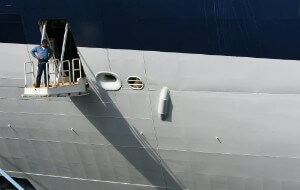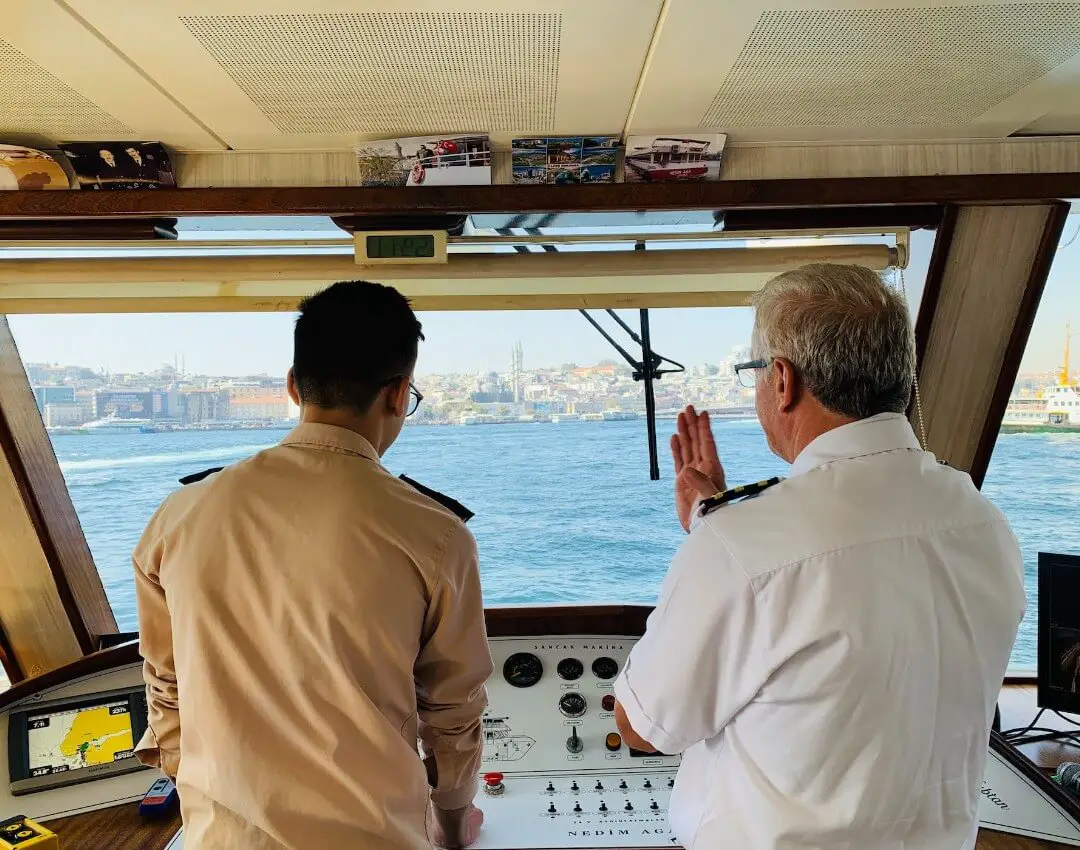Where are cruise ship crew areas located on a cruise ship?
The cruise ship crew areas are typically located on the lower decks of the ship, separate from the guest areas. They are not accessible to passengers and are designated for the use of the ship’s crew members only. These areas typically include their cabins, mess, lounges, and other crew-specific areas such as offices, storage, and laundry facilities. The crew cabins are often smaller and have fewer amenities than the guest cabins. The location of the crew areas can vary depending on the ship, but they are usually in the same area on each ship.
Do crew members of a cruise ship have single rooms?
It depends on the cruise line and the specific ship. Some cruise lines do provide single rooms for those in the crew areas, while others may have bunk beds or shared rooms. Single cabins are usually assigned to higher-ranking crew members such as Officers and Department heads.
However, typically, most of the crew share their cabins with another person, usually with bunk beds. These cabins are smaller than cruise guest cabins and have fewer amenities. The number of those sharing a cabin will depend on the size of the cabin and the number of crew members on board. It’s worth noting that the conditions for crew members on a cruise ship can vary widely depending on the ship and the cruise line, and some may have better living conditions than others.
What passenger cruise facilities can crew members use?
The use of cruise ship facilities for passengers and employees members is typically regulated by the cruise line. Many cruise lines have designated facilities that are only available to passengers, while other facilities may be shared by both passengers and crew members.
Generally, crew members may have access to some passenger facilities like the gym, swimming pools, and some restaurants during their off-duty hours, but they are not allowed to use passenger-only areas like the spa, specialty restaurants, and entertainment venues. Crew members are also prohibited from using the passenger facilities during peak hours when the ship is at full capacity, and during periods when the ship is in port.
They also have their own crew areas in designated facilities such as their mess, lounges, gym, and pool, which are not accessible to passengers. These facilities are intended to provide a comfortable and relaxing environment for employees while they are off duty.
What is the difference between staff and crew on a cruise ship?
On a cruise ship, “staff” and “crew” are generally used to refer to different groups of people who work on the ship. They share the same crew areas.
“Crew” typically refers to all of the people who work on the ship, including those who operate and maintain the ship, as well as those who provide services to passengers. This would include the ship’s officers, deck crew, engine crew, and hotel staff. Crew areas are for employees who typically live on the ship and work on a contract basis.
“Staff” generally refers to the people who work in the various departments that provide services to passengers. This would include the food and beverage staff, entertainment staff, and those who work in the guest services, retail, and shore excursion departments. Staff members also live on the ship and work on a contract basis.

It’s worth noting that these terms are not always used consistently, and some cruise lines may use different terms to refer to the people who work on the ship. Some may use “staff” to refer to all employees, while others may use “crew” to refer to all employees.
It’s worth noting that these terms are not always used consistently, and some cruise lines may use different terms to refer to the people who work on the ship. Some may use “staff” to refer to all employees, while others may use “crew” to refer to all employees.
What cruise crew member activities are available for the cruise crew?
Cruise crew members have a variety of activities and opportunities available to them in their personal areas while working on a cruise ship. It is always determined by the specific cruise line. Some of these include:
- Job-specific training: Specific training specific to their job responsibilities, such as food service, housekeeping, and safety procedures may be offered.
- Recreational activities: The members have access to recreational facilities on the ship, such as swimming pools, gyms, and lounges.
- Social events: Social events and gatherings are often organized by the ship’s crew.
- Shore excursions: They may have the opportunity to go on shore excursions when the ship is docked at ports of call, depending on their schedule and the company’s policy.
- Learning and development opportunities: Some companies offer courses and programs for their crew members to improve their skills and knowledge, such as language classes, leadership training, and more.
- Off time: Crew members have time off when the ship is at sea or docked, depending on the schedule and their job responsibilities.
Are cruise ship employees required to have vaccinations?
Cruise ship employees are generally not required to have the same vaccinations as people in the United States. Many cruise lines have their own health and safety protocols in place for employees, which may include vaccination requirements. These requirements can vary depending on the company and the itinerary of the cruise ship.
For example, some cruise lines may require employees to be vaccinated against certain diseases, such as measles or influenza, in order to protect the health of both the employees and the passengers. Others may not require vaccinations but strongly recommend them.
It’s also worth noting that some countries have different vaccination requirements for foreign workers, so every cruise ship has to be aware of the specific requirements for the countries they will be visiting.
What health & safety protocol has been implemented on cruise ships?
Cruise lines have implemented a variety of measures to protect the health and safety of their employees and passengers. These measures in both the passenger areas and the crew areas may include:
- Medical screenings: They may be required to undergo medical screenings, such as temperature checks and health questionnaires, before boarding the ship and at various points throughout the cruise.
- Social distancing: The crew members may be required to maintain social distance from passengers and other employees in certain areas of the ship.
- Personal protective equipment: Personal protective equipment, such as masks or gloves, may be required while on duty.
- Increased cleaning and sanitation: Increased cleaning and sanitation protocols may be required to help prevent the spread of illness.
- Health monitoring: Crew members may be required to self-monitor for symptoms of illness and report any concerns to the ship’s medical staff.
It’s important to note that these protocols may change as the situation evolves and as the company adapts to new guidelines issued by the relevant authorities.
What happens if a cruise crew member refuses to do their job?
If a cruise employee refuses to do his or her job, the specific consequences will depend on the situation and the policies of the cruise line. However, in general, not fulfilling job responsibilities can result in disciplinary action, up to and including termination of employment. Additionally, if an employee’s actions put the safety and well-being of passengers at risk, they may face additional penalties.
Is a fired crew member ever dropped off at the port they are in?
Cruise crew members are not usually dropped off at the port they are in. They may have to wait until they reach the next port where the ship is scheduled to dock or until the end of the contract. However, in certain extenuating circumstances, they may be let go at a port if their behavior is deemed unacceptable or if they are unable to fulfill their duties. This would be done only after proper investigation and following the company policies.
Conclusion
In conclusion, the crew ship areas are a fascinating and often unknown aspect of cruise ships that offer a glimpse into the behind-the-scenes operations of these massive vessels. From crew-only lounges and bars to hidden staircases and corridors, these areas play a crucial role in ensuring that every aspect of a cruise ship runs smoothly.
As a comparison of the crew area of today’s mega cruise ships to the incredible Titanic, it is hard to believe that the crew areas alone may have compared to the whole Titanic with its elaborate design and luxurious amenities. This is a reminder of the evolution of cruise ships over time.
In 1912 they never would have been able to imagine that the areas below the water line in today’s ships would compare to the total area in the luxurious Titanic. It serves as a reminder of the evolution of cruise ships over time.









0 Comments